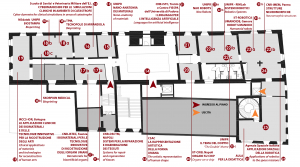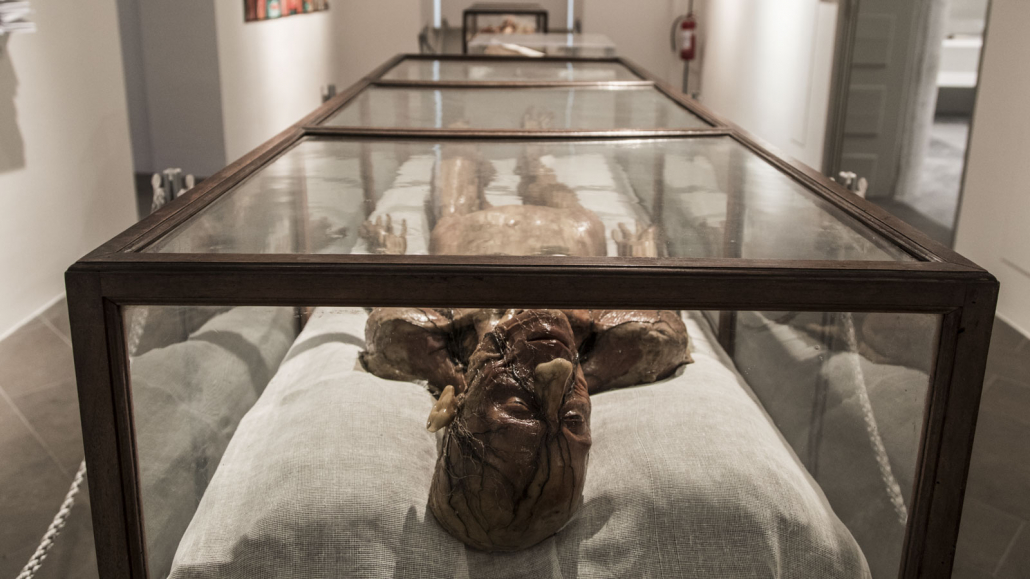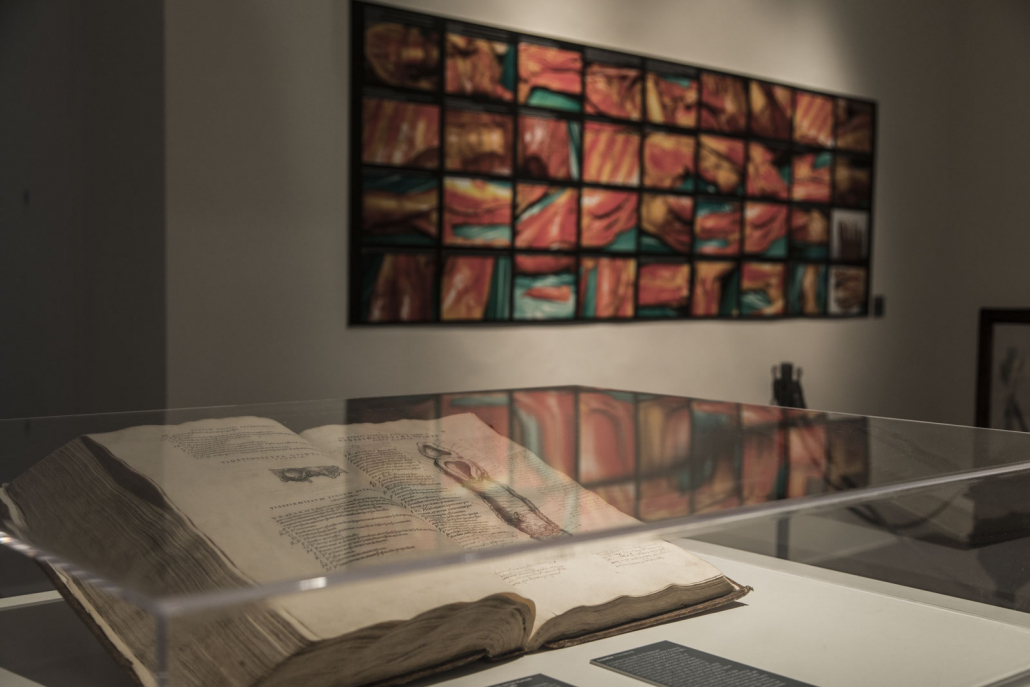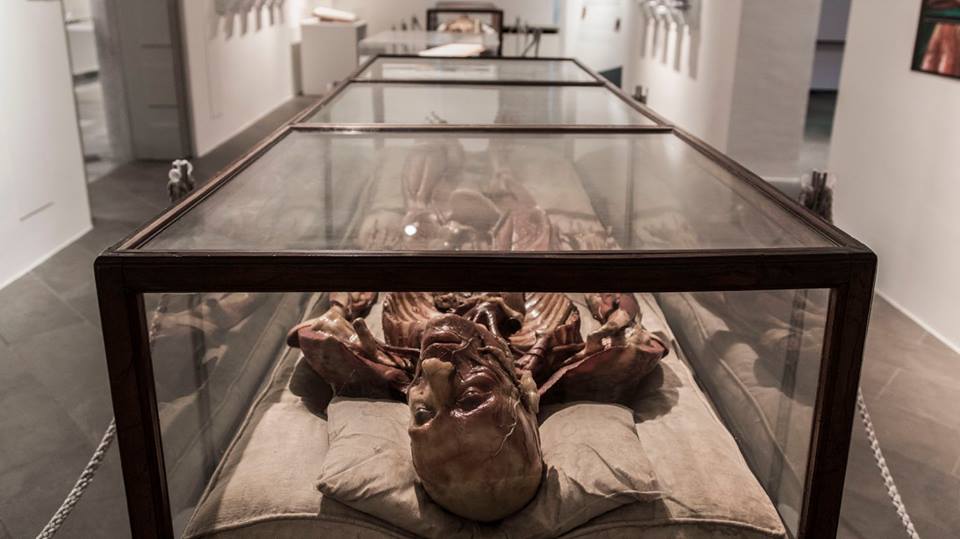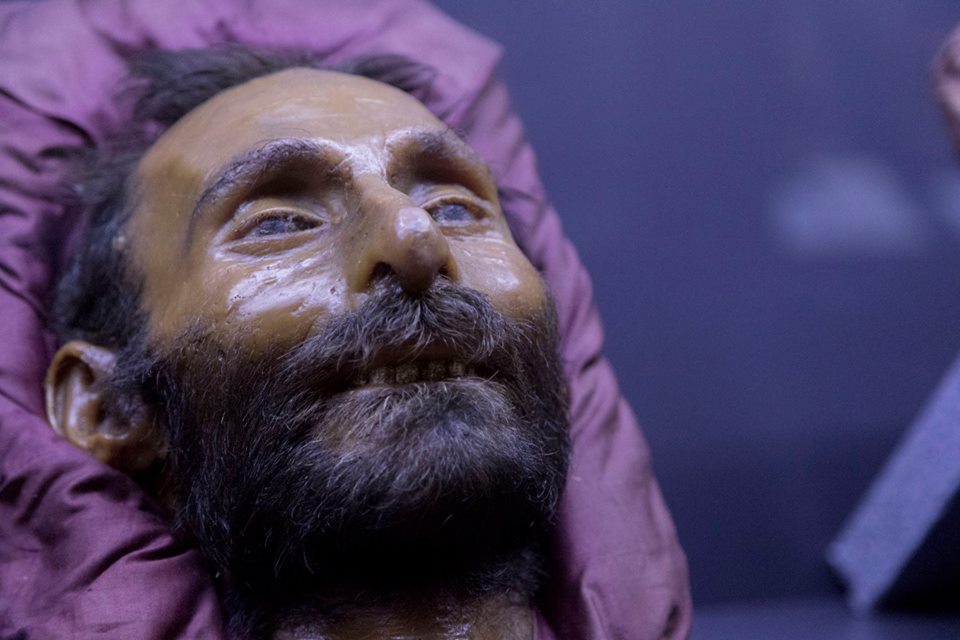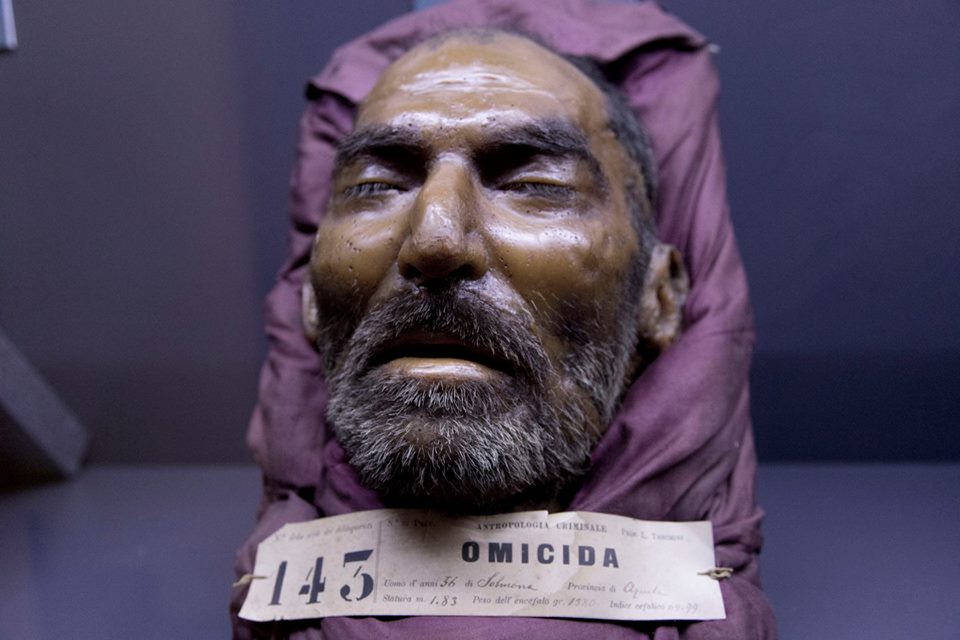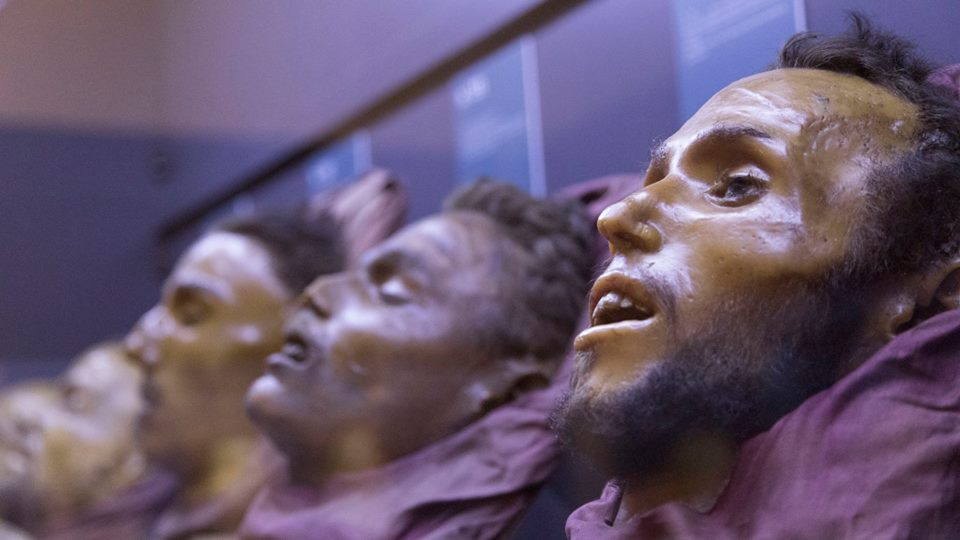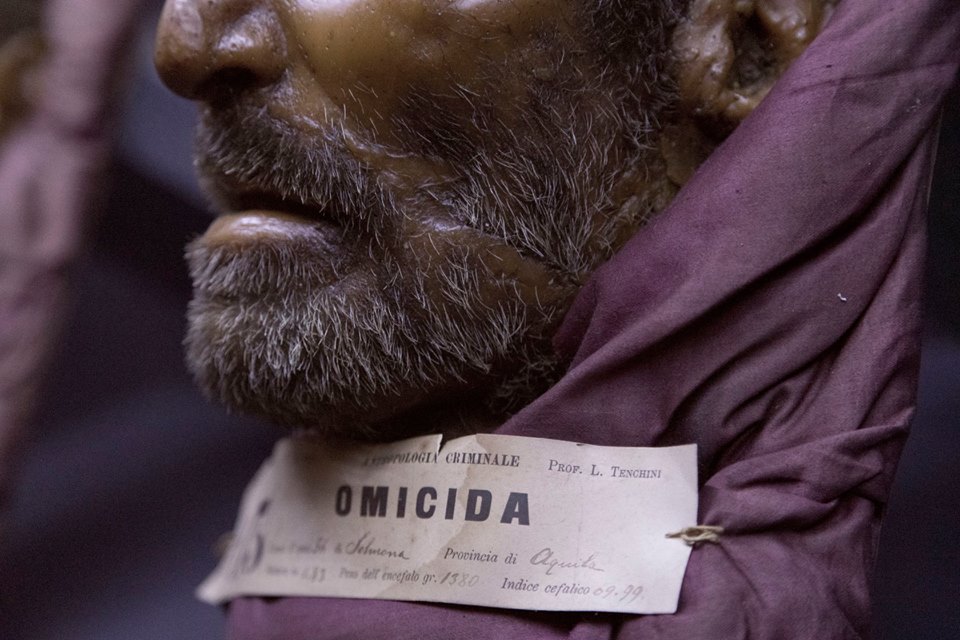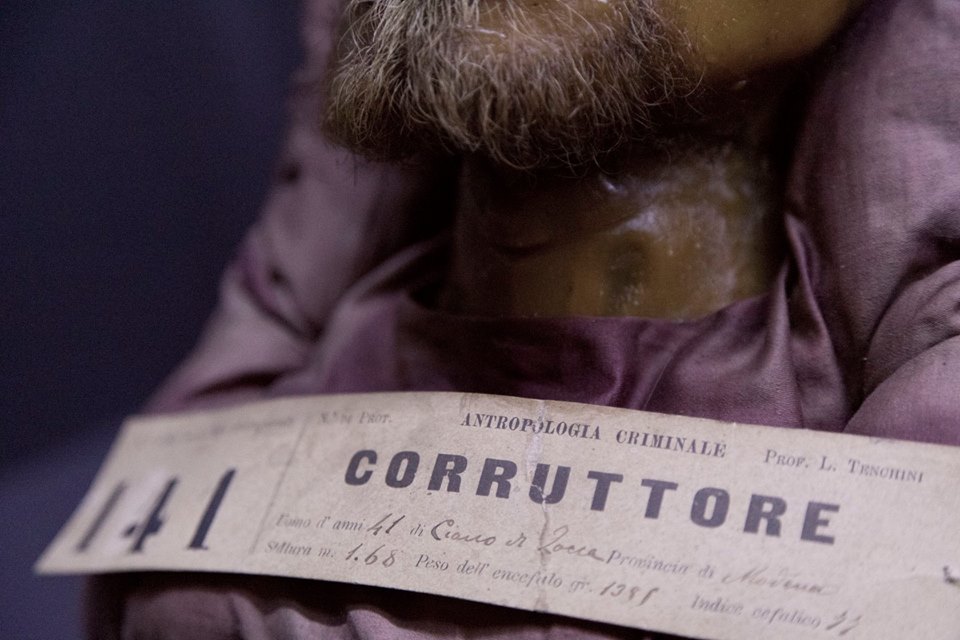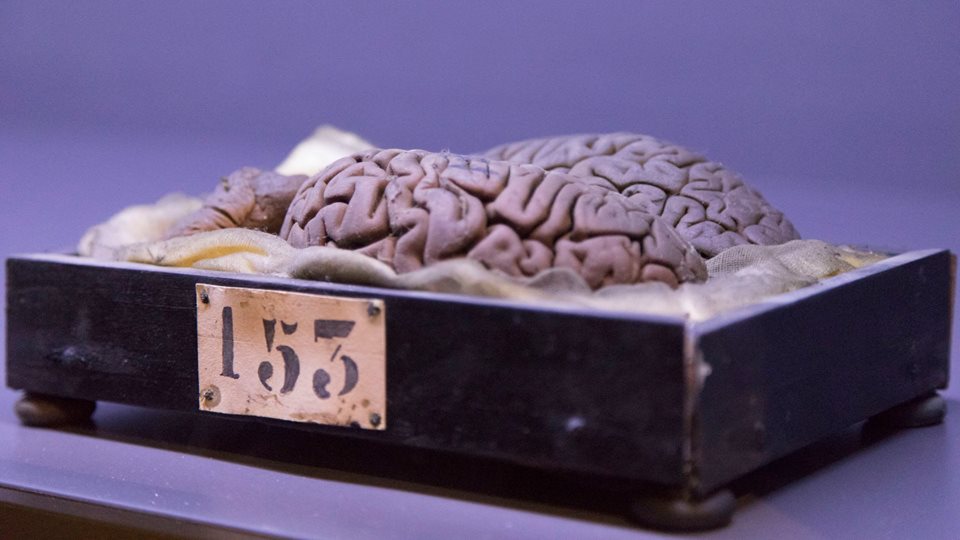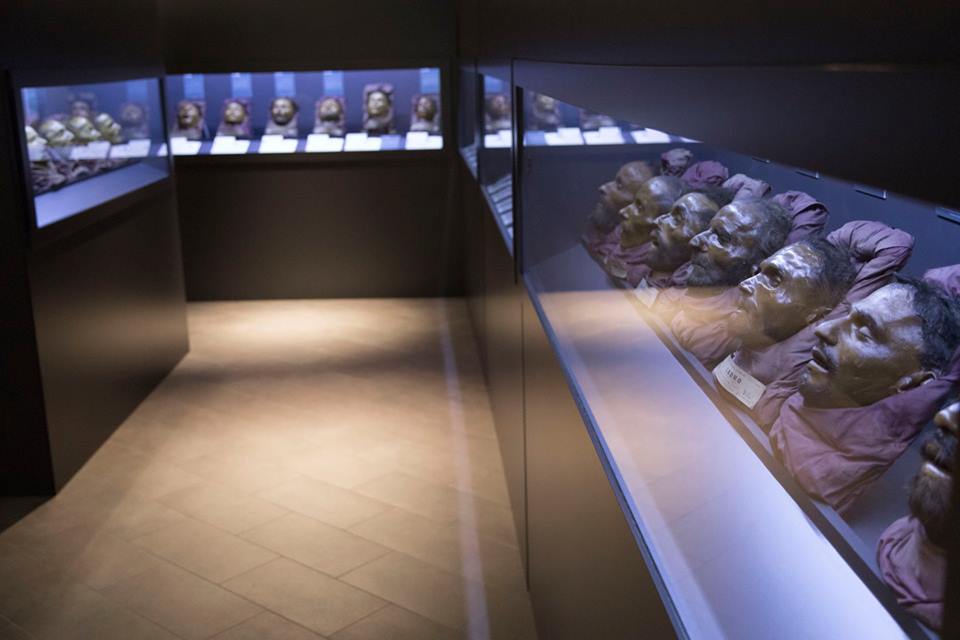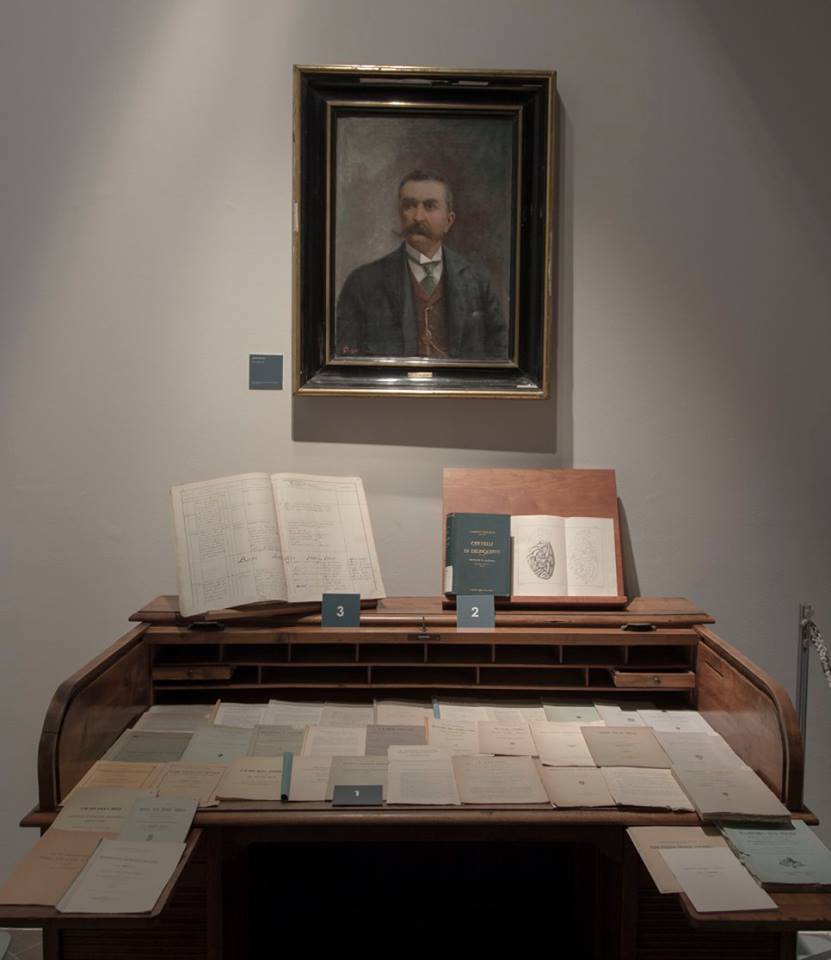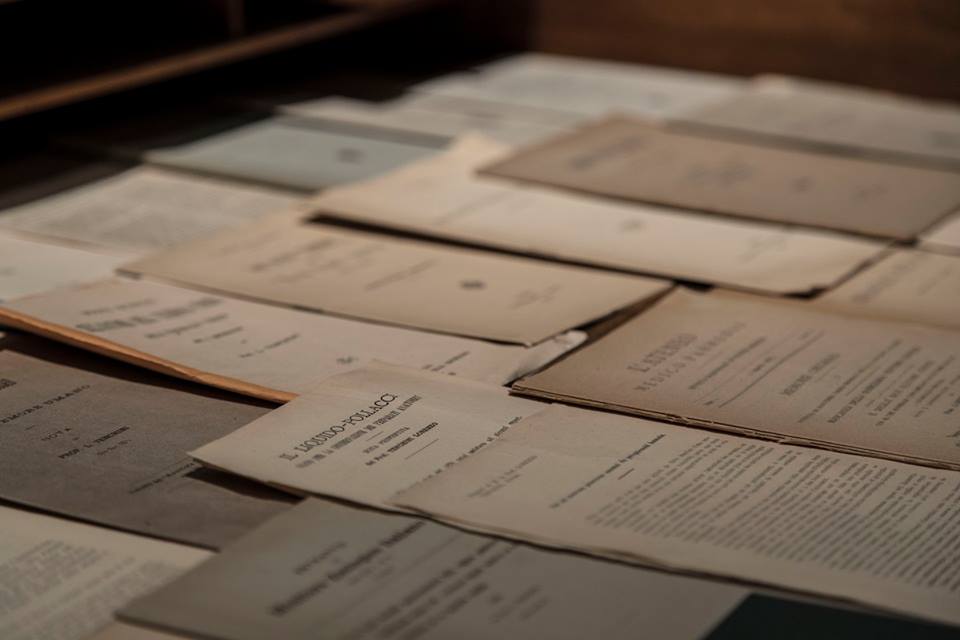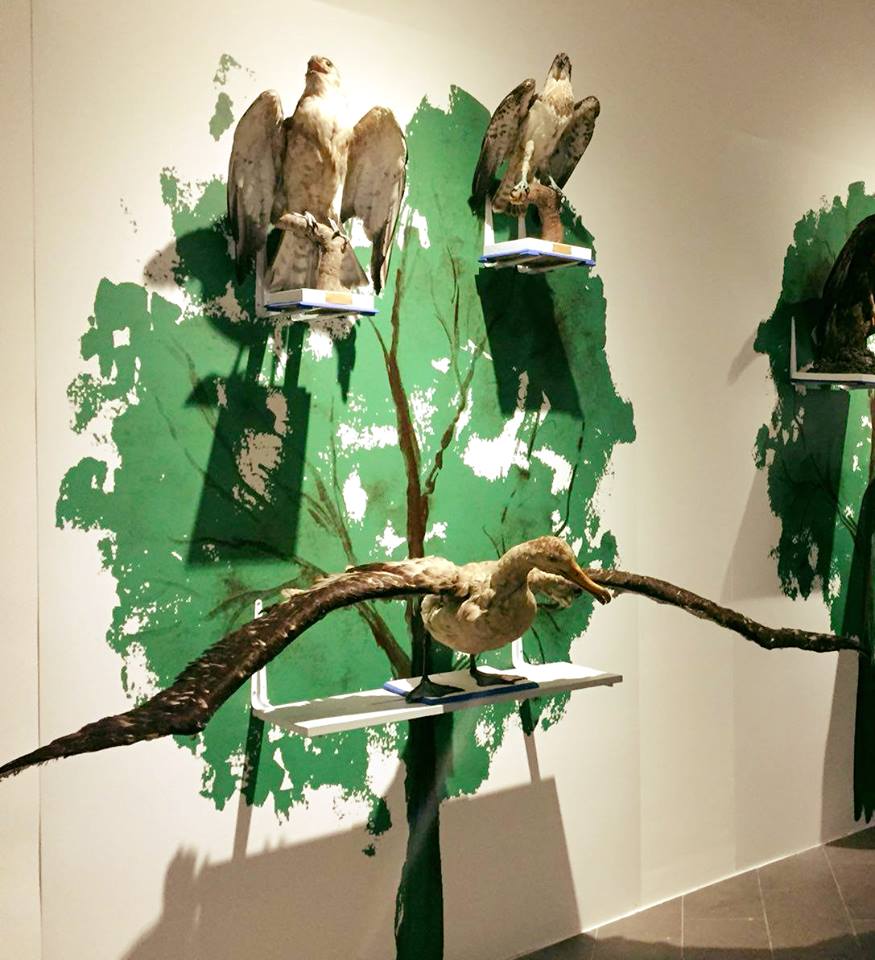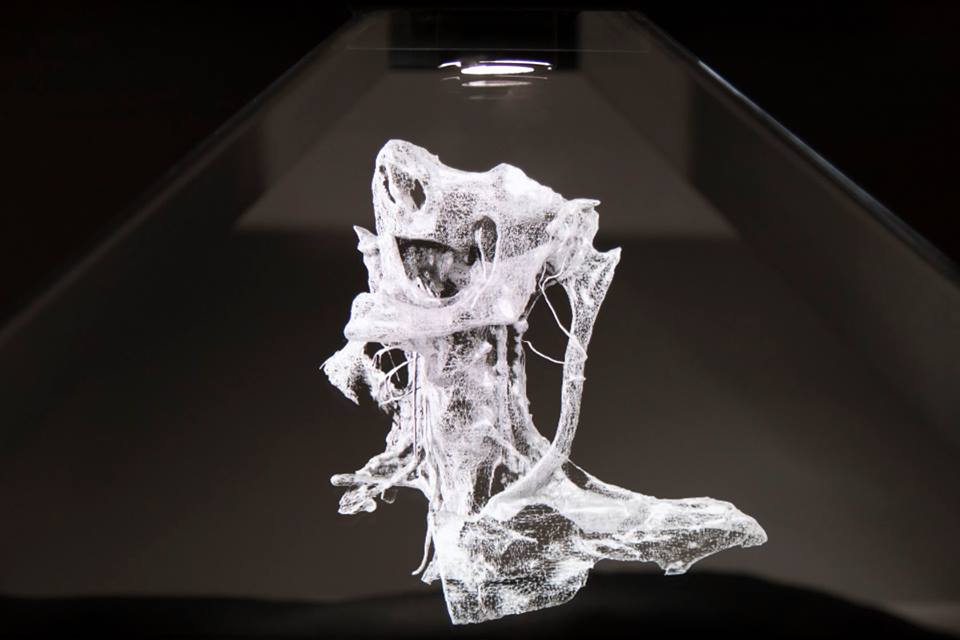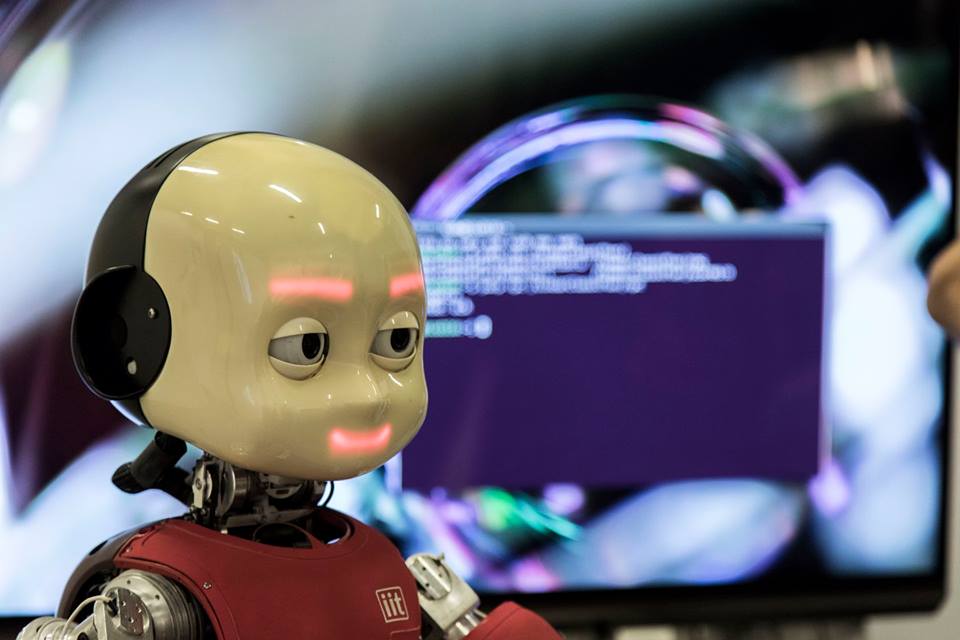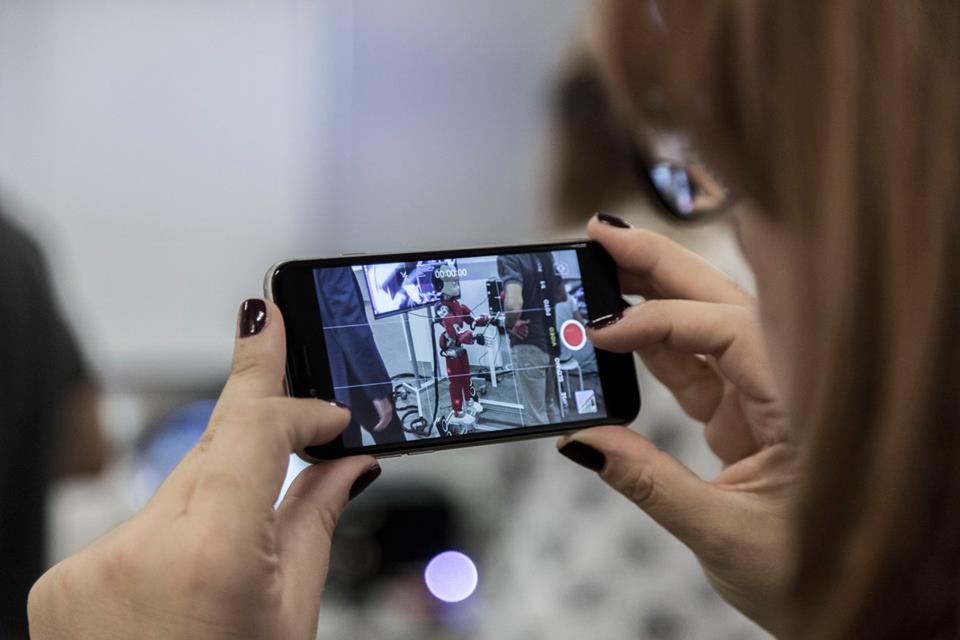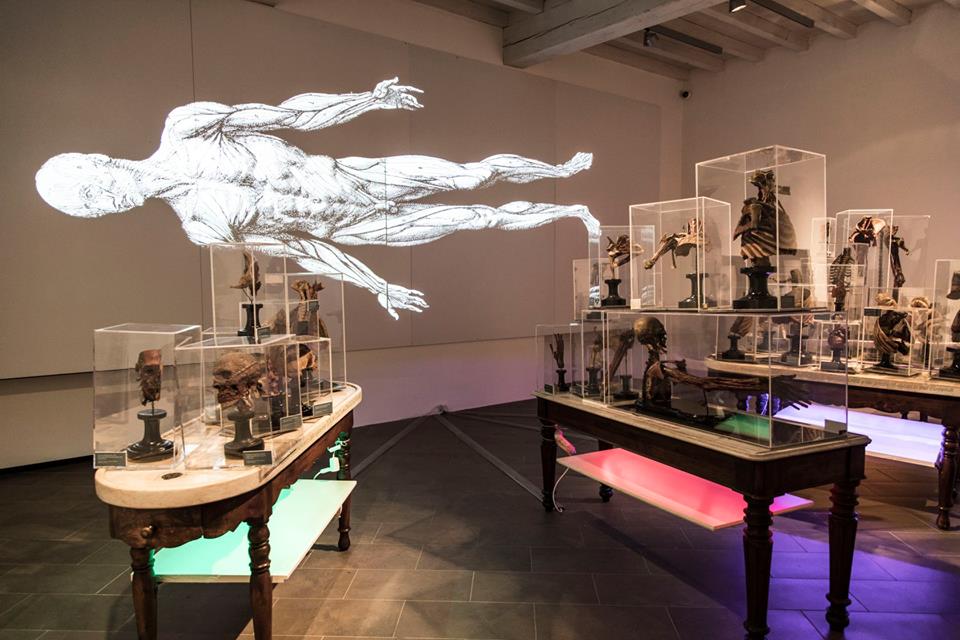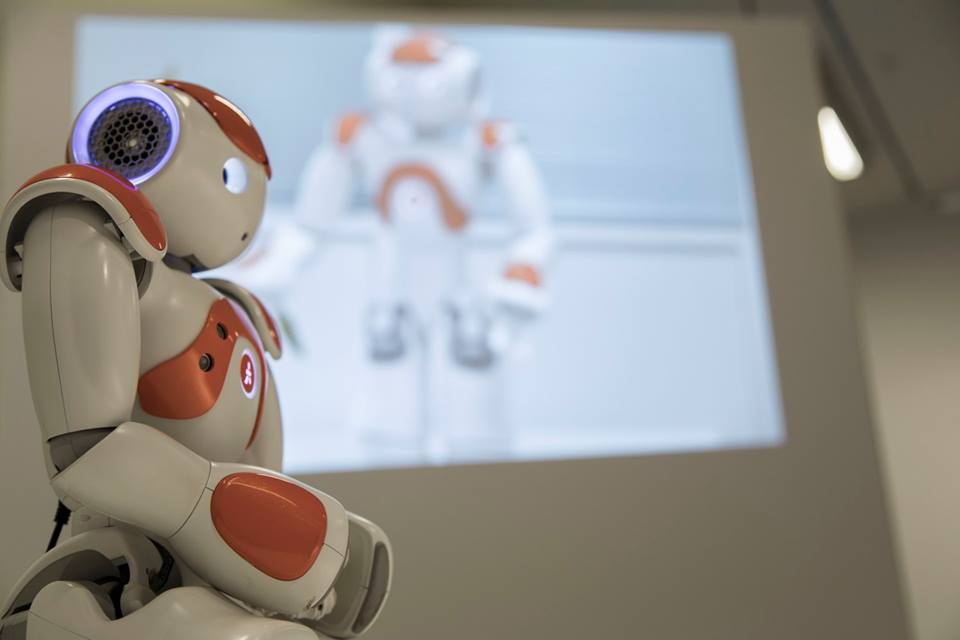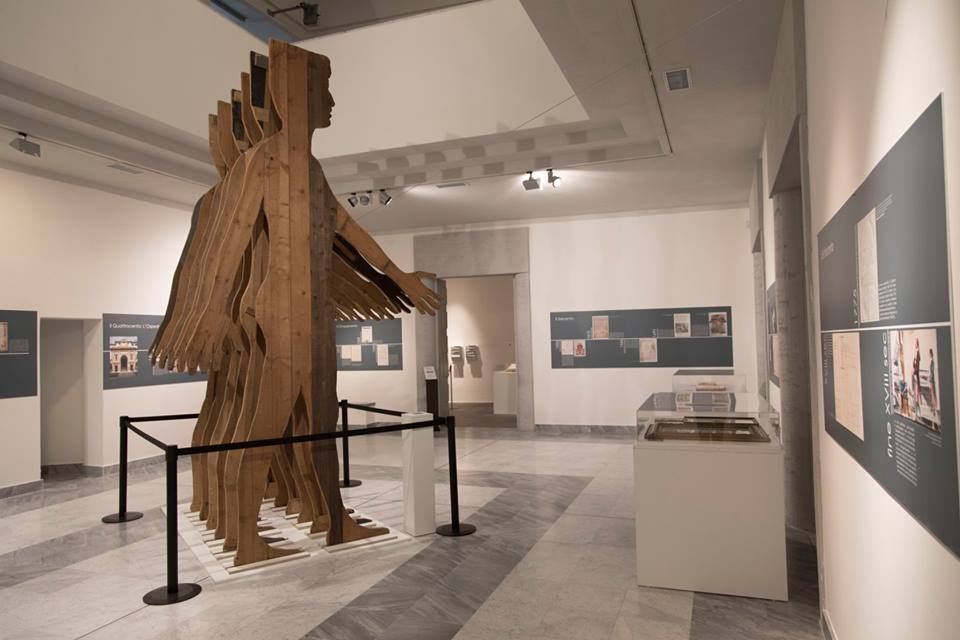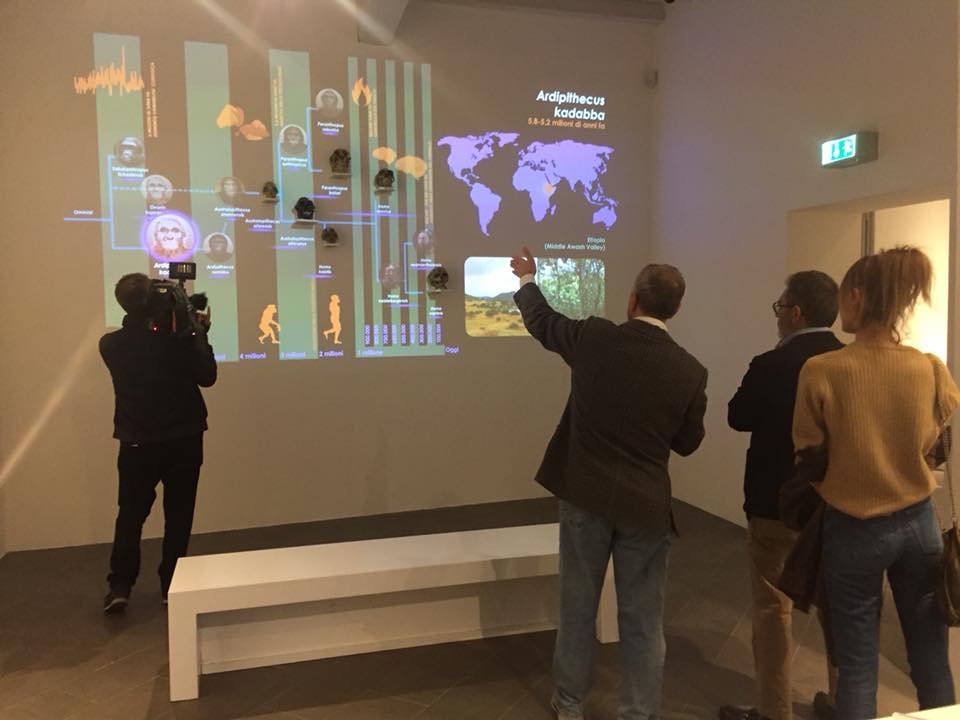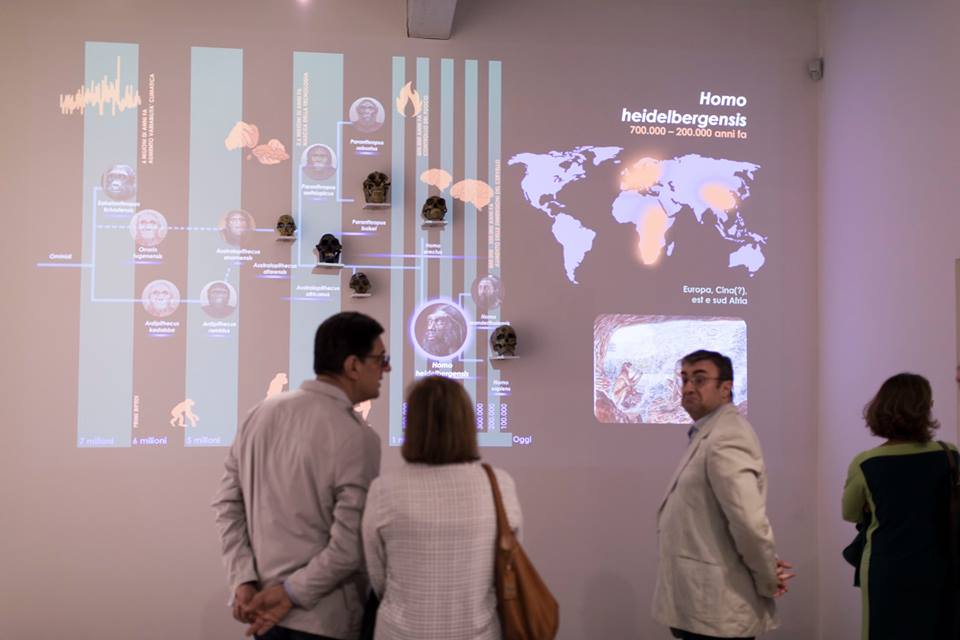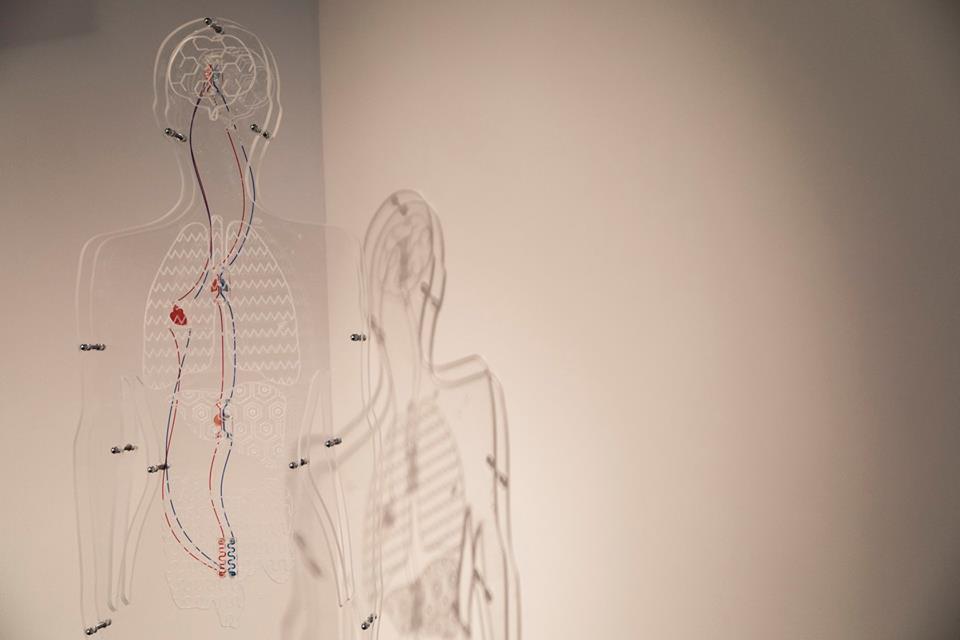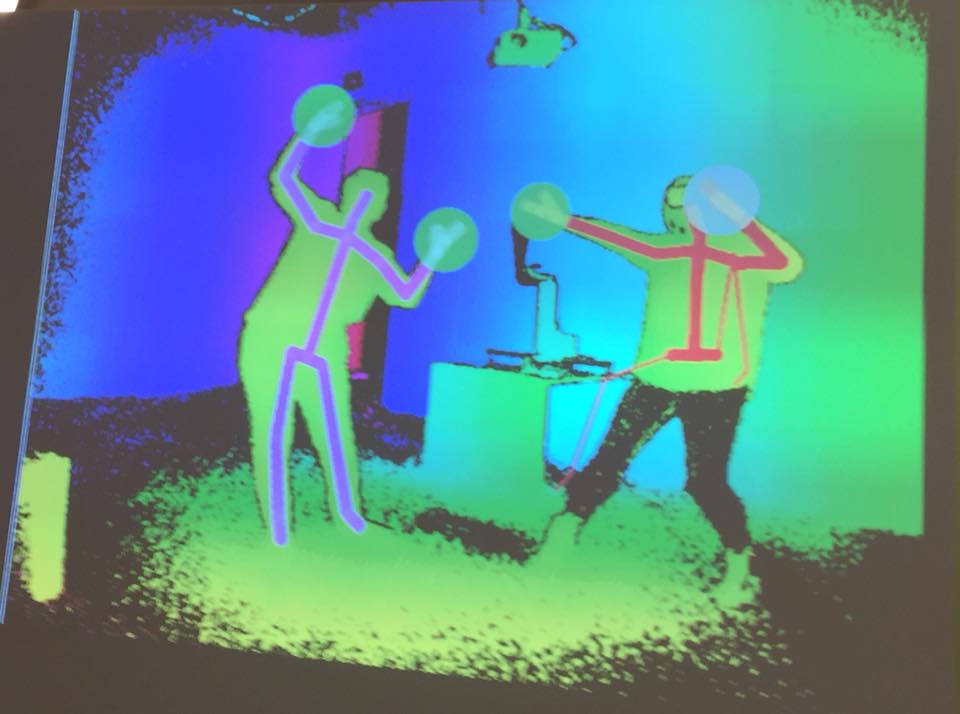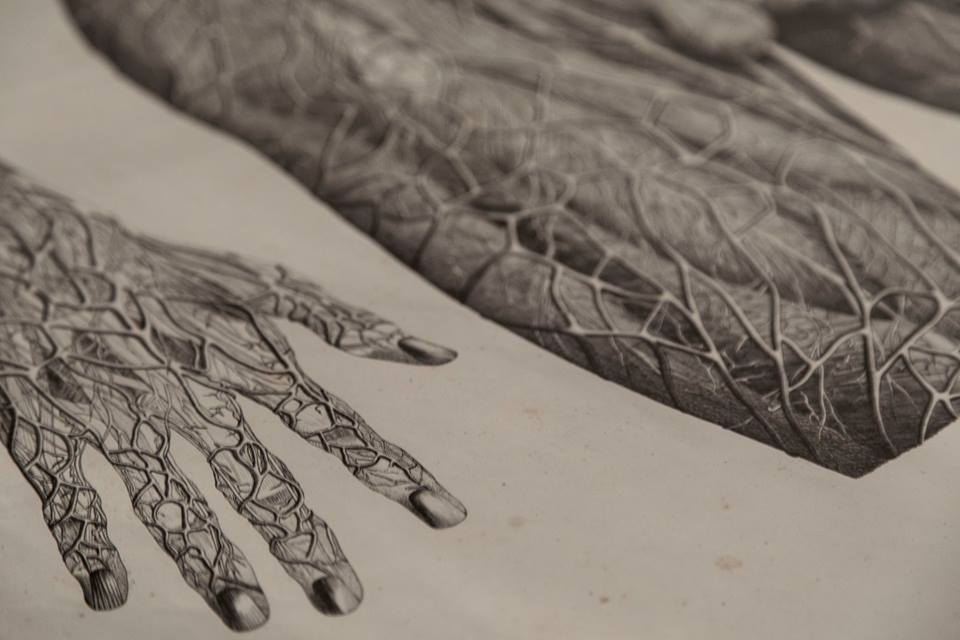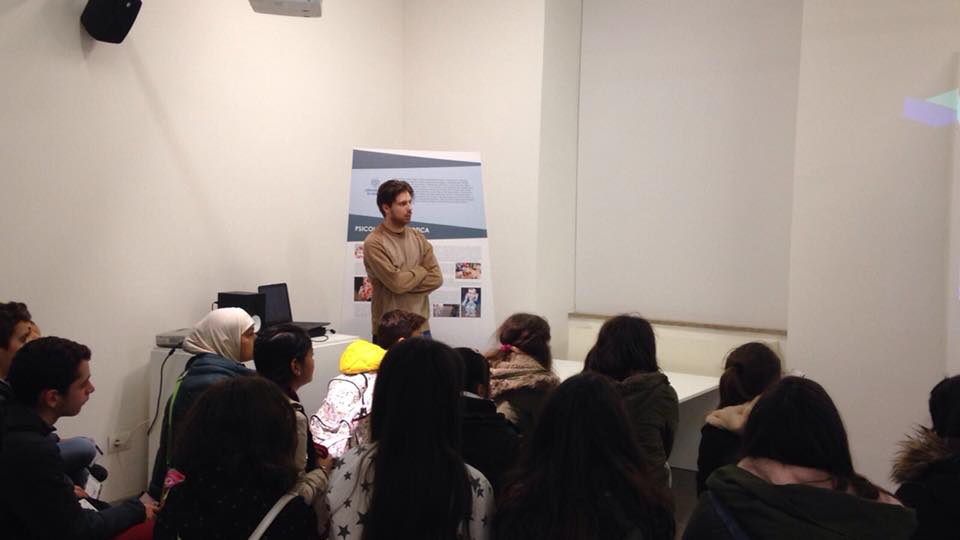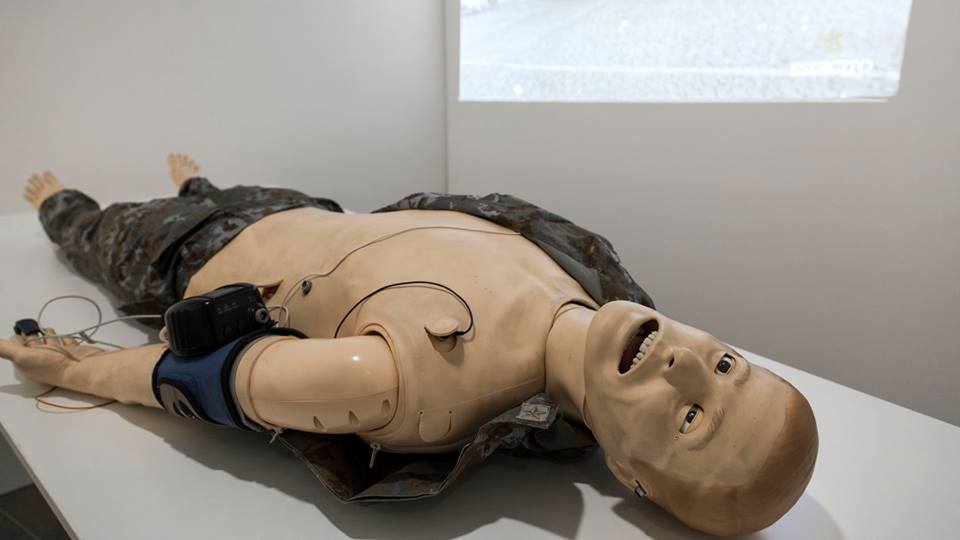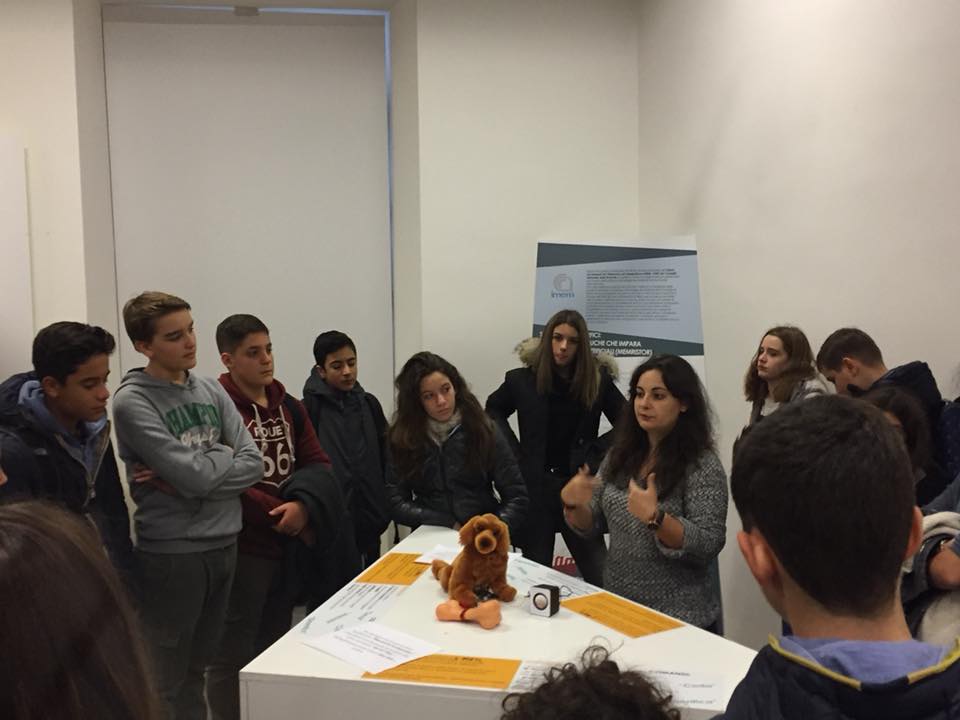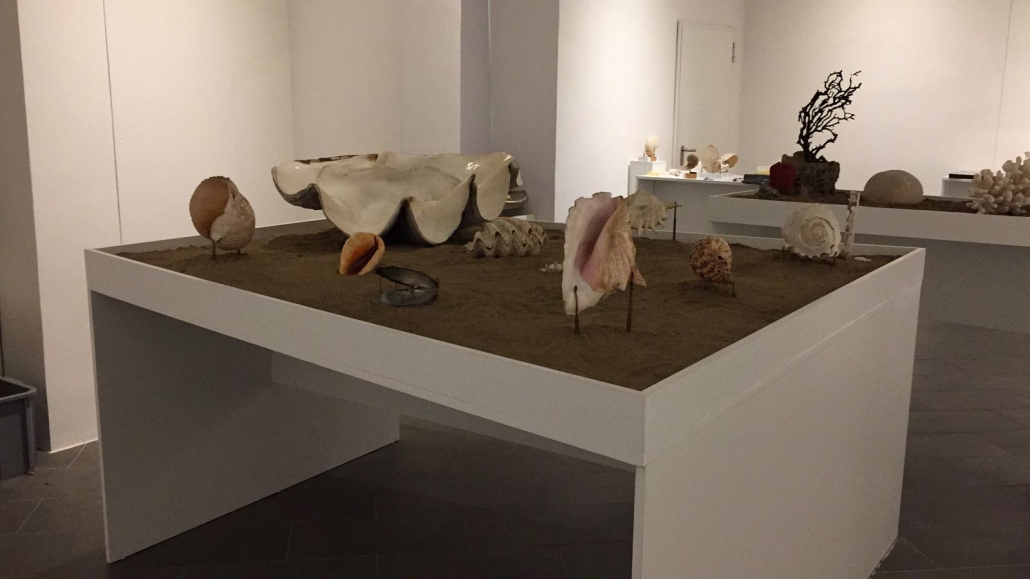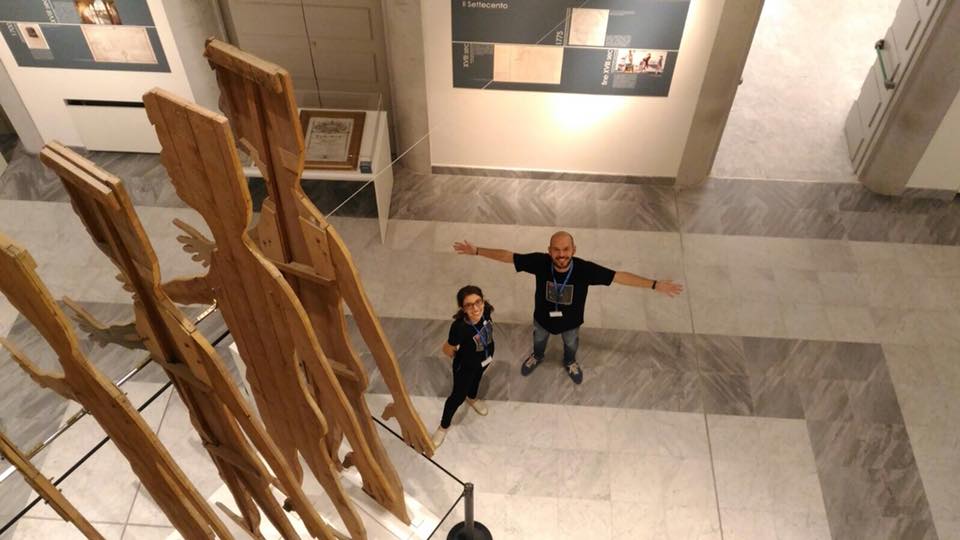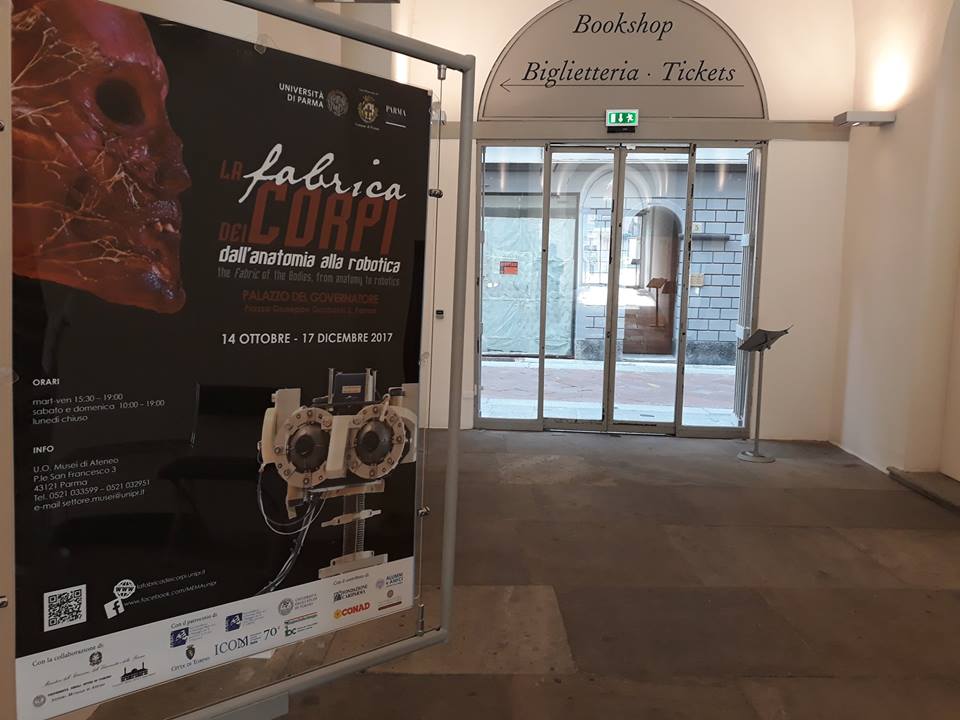“La Fabrica dei corpi. From anatomy to robotics’.”
Governor’s Palace, Piazza Garibaldi, Parma
14 October – 17 December 2017
Knowledge of the structure of living bodies, in particular that of the human body, underpins some of the greatest biomedical achievements of the late 20th and early 21st centuries. It promises to increasingly become an irreplaceable guide for translational research aimed at developing biotechnologies for the regeneration of tissues, organs and their bioartificial engineering. Starting from the evidence of Darwinian memory that, in Vertebrates, the attainment of a specific form is a necessary condition to ensure a physiological performance adequate to the three-dimensional (3D) cell mass, today we have come to the realisation that even the capacity of an organism to evolve, i.e. to be able to cope with the challenges of the changing reality in which it lives, depends on the embryonic mechanisms that enable its morphological transformation.
These cultural assumptions were the starting point for the technological challenges that led, in the biomedical sciences, to the realisation of biocompatible materials and their use in numerous clinical and pre-clinical reconstructive fields, including the artistic field of anatomical ceroplastic restoration, up to bioprostheses with biomaterials, 3D bioartificial organs with stem cells and humanoid robots, whose innovations aim to make them operational support for the protection of human health, with the ambitious goal of their use alongside Man in the conquest of space.
The international event ‘The Body Factory. From anatomy to robotics’, a historical, scientific and popular exhibition that will take place at the Palazzo del Governatore in Parma as part of both the initiatives of the Municipality of Parma for the celebrations of the 2200th anniversary of the foundation of the city of Parma and those promoted by the University of Parma for the internationalisation of the University in the 2017-2018 academic year.
The strictly scientific imprint of the event makes it particularly usable for fans of futuristic technologies in the field of biomedicine, in particular regenerative medicine, as well as for lovers of the history of science, primarily medical science.
The constant reference to the experimental bases of the technological achievements presented amplifies and consolidates its attractiveness for academics, researchers and operators in the biotechnological, pharmaceutical, biomedical and robotics sectors applied to the life sciences and its developments in the conquest of space.
The popular and didactic nature of the materials presented makes the exhibition suitable for contributing to the cultural education of students in schools of all levels in Parma and its province, as well as in the Emilia-Romagna region.
Finally, the planned interactive methods, which count didactic workshops, the use of cutting-edge virtual image technologies such as immersive 3D navigation and holography, and facilitated explanatory paths extend its practicability to families, those working in the tourism sector, and those in the cultural heritage and film industries.
THE ROUTE
The exhibition is spread over both floors of the Governor’s Palace for a total of 1,200 square metres.
The first section (on the first floor) begins the cognitive journey that starts in evolutionary terms from animal forms and anatomy to the anatomy of Man and his representations at the end of the 19th century, where the extraordinary collection of physiognomic masks, of Lombrosian doctrine, prepared by the anatomist Lorenzo Tenchini, is collected.
These masks are once again reunited in Parma, for the first time after 110 years, thanks to the generous collaboration of the Lombroso Museum in Turin, which has kept part of the collection since the beginning of the 20th century and has agreed to lend it in its entirety for this event.
In the second section (on the second floor), starting from the structure of the human body, the exhibition opens with artistic and mathematical-computational symbolisations and elaborations for the virtual reconstruction of bodies, and then takes us through the use of these reconstructions for the engineering of bioartificial organs with biomaterials, up to the anthropomorphic simulation of bodies by humanoid robots, the latest frontier of technology applied to human health and for which future uses are foreseen in missions to conquer space.
International event as part of the celebrations for the 2200th anniversary of the foundation of the city of Parma and the scientific-cultural initiatives promoted by the University of Parma for the 2017-2018 academic year
with the collaboration of


with the patronage of




![]()
![]()
with the contribution of




COMMITTEE OF HONOUR
Chair
GIOVANNI FRANCESCHINI, Vice Rector of the University of Parma
GIANMARIA AJANI, Magnificent Rector of the University of Turin
EUGENIO GAUDIO, Magnificent Rector, ‘La Sapienza’ University of Rome
FEDERICO PIZZAROTTI, Mayor, City of Parma
MICHELE GUERRA, Councillor for Culture, Municipality of Parma
Components
FURIO BRIGHENTI, Pro-Rector with responsibility for the Internationalisation Research Area, Libraries and Museums, Parma University
LUCA TRENTADUE, Rector’s Delegate to the University Museum System of Parma
OVIDIO BUSSOLATI, Pro-Rector with responsibility for Personnel and Organisation, Parma University
MARIA CRISTINA OSSIPRANDI, ProRector of Education and Student Services, Parma University
SILVANA ABLONDI, General Manager, Parma University
BARBARA PANCIROLI, Deputy Director General, Parma University
LAURA MARIA FERRARIS, Councillor for Culture from 2012 to 2017, Municipality of Parma
GIOVANNA PAOLOZZI STROZZI, Director Soprintendenza Archeologia, Belle Arti e Paesaggio per le province di Parma e Piacenza
LUISA PAPOTTI, Director Archaeology, Fine Arts and Landscape Superintendence for the Metropolitan City of Turin
FRANCESCA LEON, Councillor for Culture, City of Turin
INTERNATIONAL SCIENTIFIC COMMITTEE
ROBERTO TONI, University of Parma – Academy of Sciences, Bologna – Tufts University, Boston, MA, USA
RONALD M. LECHAN, Tufts University, Boston, MA, USA – Academy of Sciences, Bologna – Society of Medicine and Natural Sciences, Parma
GIACOMO GIACOBINI, Turin University, Turin
JACK BURMAN, Seneca College of Applied Arts & Technology, Toronto, Canada
ALESSANDRO PORRO, Milan University, Milan
POUL DUEDAHL, Aalborg University, Aalborg, Denmark
SILVANO MONTALDO, Turin University, Turin
MAGDALENA GRASSMANN, University of Bialystok, Bialystok, Poland
GIULIO SANDINI, University of Genova– Italian Institute of Technology, Genova
IVAN MARTIN, University of Basel, Basel, CH – Society of Medicine and Natural Sciences, Parma
ANNA TAMPIERI, ISTEC – CNR, Faenza – Society of Medicine and Natural Sciences, Parma
LISA CEGLIA, Tufts University, Boston, MA, USA – Society of Medicine and Natural Sciences, Parma
ROBERTO BATTISTON, Italian Space Agency, Roma
SALVATORE IANNOTTA, IMEM – CNR Parma
PAOLO NETTI, IIT at CRIB, Napoli
LUIGI AMBROSIO, CNR-DSCTM, Napoli,
ANTONELLA GUIDAZZOLI, VisitLab – CINECA, Bologna
CRISTINA CILLI, University of Tuin
MARIA PAOLA LANDINI, IRCCS – IOR, Bologna
LAURA SPERANZA, Opificio delle Pietre Dure, Firenze
PAOLO MAZZARELLO, University of Pavia
FRANCESCA VANNOZZI, University of Siena
FEDERICO LUNARDI, Military Health and Veterinary School, Roma
PIERDANIELE GIARETTA, University of Padova – Society of Medicine and Natural Sciences, Parma
STEFANO BORGO, CNR – ISTC, Trento – Society of Medicine and Natural Sciences, Parma
ANDREA GATTO, University Unimore
LUCIA MANZOLI, University of Bologna
ANDREA MONTELLA, University of Sassari
ALDO DE POLI, University of Parma
RINO PANU, University of Parma
FERDINANDO GAZZA, University of Parma
MARCO VITALE, University of Parma
ROSSANA CECCHI, Università di Parma
LISA ELVIRI, University of Parma
ALESSIA BACCHI, University of Parma
PAOLA MONEGATTI, University of Parma
CRISTINA MENTA, University of Parma
MARIO TRIBAUDINO, University of Parma
FRANCESCA ZANELLA, University of Parma
STEFANO CASELLI, University of Parma
JACOPO ALEOTTI , University of Parma
OLIMPIA PINO, University of Parma
LEONARDO FOGASSI, University of Parma
ORGANISING COMMITTEE
MARINA GORRERI, Sistema Museale di Ateneo, University of Parma
BARBARA RONDELLI, Sistema Museale di Ateneo, University of Parma
CATERINA MOISÈ, Sistema Museale di Ateneo, University of Parma
Layout and graphics
MARIA AMARANTE, Sistema Museale di Ateneo, University of Parma
Supporto tecnico scientifico
DAVIDE DALLATANA, University of Parma
ELENA BASSI, University of Parma
FULVIO BARBARO, University of Parma
MARCO ALFIERI, University of Parma
ELIA CONSOLINI, University of Parma
PIETRO SETTI, University of Parma
STEFANO BULLA, Sistema Museale di Ateneo, University of Parma
MARIANGELA FURLINI, Sistema Museale di Ateneo, University of Parma
ALESSANDRA GORRERI, Sistema Museale di Ateneo, University of Parma
ANNAMARIA DICEMBRINO, Sistema Museale di Ateneo, University of Parma
MAURIZIO MIONI, Sistema Museale di Ateneo, University of Parma
MASSIMO SAVINO, University of Parma
ALBERTO RICCI, University of Parma
SALVATORE MOSCA, Army, Ministry of Defence, Bologna
CLAUDIA DELLA CASA, Ospedale Maggiore, Bologna
NICOLETTA ZINI, Igm – Cnr – IOR, Bologna
MONICA SANDRI, Istec – Cnr, Faenza
TERESA RUSSO, Ipcb – Cnr, Napoli
VALENTINA LA TILLA, IIT – Crib, Napoli
MARIA CARLA BOLOGNA, IOR, Bologna
PATRIZIA TOMBA, IOR, Bologna
ANNA VIGANO’, IOR, Bologna
LUCA CARIDA’, IIT, Genova
IRENE RIVARA, IIT, Genova
Website
MARINA BIANCHI, Sistema Museale di Ateneo, University of Parma
MASSIMO MENOZZI, Sistema Museale di Ateneo, University of Parma
With the participation of
LUCREZIA FORNASINI, t-shirt graphics
ANDREA MARESCHI, photos and videos
STEFANO DE STEFANO, voice
With the collaboration of
FLORA RAFFA, Municipality of Parma
DARIO NADDEO, Municipality of Parma
CRISTINA CALIDONI, Municipality of Parma
PATRIZIA FERRARI, Municipality of Parma
DON LORENZO MONTENZ, Diocesan Episcopal Historical Archive, Parma
THANKS FOR THE VALUABLE COLLABORATION
AND FOR THE LOAN OF THE MATERIALS ON DISPLAY:
MIUR Ministero dell’Istruzione dell’Università e della Ricerca
Municipality of Parma
Museum of Criminal Anthropology “Cesare Lombroso” and il Sistema Museale of Turin University
ASI Italian Space Agency
Parma State Archives
Parma Municipal Historical Archives
University of Parma Historical Archives
Parma Episcopal Diocesan Historical Archive
Azienda Ospedaliero-Universitaria of Parma
Library of Medicine and Surgery, University of Parma
Biblioteca Palatina of Parma
CNR-IMEM of Parma
CNR-ISTEC of Faenza
CNR-IPCB of Napoli
CNR-ISTC of Trento
CSAC – Centro Studi e Archivio della Comunicazione of Parma University
Deputazione di Storia Patria per le Province Parmensi
RIMLab – Dipartimento di Ingegneria e Architettura
Unità di Neuroscienze – Dipartimento di Medicina e Chirurgia
Fin-ceramica Faenza Spa
GreenBone Ortho Faenza
IIT – CRIB di Napoli
IIT of Genova
IRCCS-IOR Rizzoli of Bologna
M3Datek Srl of Parma
Alessio Lemoigne Veterinary Anatomical Museum of the University of Parma
Museum and Historical Museum Library of Biomedicine of the University of Parma
Museum of Crystallochemistry, University of Parma
G. Cortesi Geological Museum of Castell’Arquato
Museum of Physics and Earth Sciences – Mineralogical Section of the University of Parma
Museum of Physics and Earth Sciences – Palaeontological Section of the University of Parma
Museum of Natural History, University of Parma
Museo Geologico G. Cortesi, Castell’Arquato (PC)
Opificio delle Pietre Dure of Firenze
Italian Army School of Military Health and Veterinary Medicine
TPM – Tecnopolo di Mirandola (MO)
Visit Lab CINECA di Bologna
11 December 2017
Bioethical, legal and legislative aspects of emerging technologies in regenerative medicine and humanoid robotics
21 November 2017
‘Human beings and humanoid robots’, lecture by Giulio Sandini, as part of the exhibition ’La Fabrica dei corpi. From anatomy to robotics’ Lecture by Roberta Ballestriero on scientific ceroplasty and artificial anatomy
19 October 2017
Lecture by Roberta Ballestriero on scientific ceroplasty and artificial anatomy
Bioethical, legal and legislative aspects of emerging technologies in regenerative medicine and humanoid robotics
11 December 2017, 9:30 – 13:00, Auditorium Palazzo del Governatore
Study Day in collaboration with the Centro Universitario di Bioetica of Parma University
9.30 – 10.00 Opening greeting
Moderator: Roberto Toni, Scientific Director Museo e Biblioteca Storica Museale di Biomedicina -BIOMED, Sistema Museale di Ateneo, Parma University;
Speakers:
– Paolo Martelli, Pro Vice Rector, Parma University
– Antonio D’Aloia, Director University Centre for Bioethics, Parma University
– Ugo Salvini, President Bar Association of Parma
– Luigi D’Anna, Commander General Italian Army School of Military Health and Veterinary Medicine, Roma
La prospettiva bioetica
Moderator: Antonio D’Aloia
Professor of Constitutional Law and Director of the University Centre for Bioethics,
Parma University
10.00 – 10.25
Carlo Casonato
National Bioethics Committee and University of Trento
The most recent challenges for the right to health
10.25 – 10.30
Discussion
10.30 – 10.55
Marta Tomasi
Trento University
Dalla ricerca alle terapie con le cellule staminali: diritto alle cure e responsabilità della scienza
10.55 – 11.00
Discussion
11.00 – 11.15
Coffe break
11.15-11.40
Federico Lunardi
Army Military Health and Veterinary School, Roma
The ethical framework to refer to when working in difficult environmental situations or on behalf of populations with traditions and customs rooted in different cultural contexts
11.40 – 11.45
Discussion
The legal and legislative perspective
Moderator: Roberto Uzzau
Forum of Sassari and Board of Directors
Cassa Nazionale di Previdenza e Assistenza Forense (National Lawyers’ Pension and Assistance Fund), Roma
11.45 – 12.10
Rossana Cecchi
Parma University
What legal and ethical responsibilities for the doctor?
12.10 – 12.15
Discussion
12.15 – 12.40
Giuseppe Buffone
Ministry of Justice – International Relations Office, Roma
Innovative medical biotechnology: legal problems and issues under current legislation and de jure condendo
12.40 – 12.45
Discussion
12.45 – 13.00
Conclusions
 ‘Human Beings and Humanoid Robots’, lecture by Giulio Sandini, as part of the exhibition “La Fabrica dei corpi From anatomy to robotics’
‘Human Beings and Humanoid Robots’, lecture by Giulio Sandini, as part of the exhibition “La Fabrica dei corpi From anatomy to robotics’
21 November 2017, 11:00 a.m., Governor’s Palace Auditorium
Tuesday 21 November at 11 a.m., at the Governor’s Palace (Piazza Garibaldi),
the Prof. Giulio Sandini, Director of Department of Robotics, Cognitive and Brain Sciences of IIT – Istituto Italiano di Tecnologia of Genova, will give the keynote reading ‘Human Beings and Humanoid Robots”
The appointment, open to all interested, is organised by the University of Parma Museum System on the occasion of the exhibition ‘La Fabrica dei corpi. From anatomy to robotics’, underway at the Palazzo del Governatore until 17 December. The lecture will be introduced by Prof. Roberto Toni, Scientific Director of the Museum and Historical Library of Biomedicine of the University of Parma, and curator of the exhibition.
The lecture will be followed by a guided tour of the exhibition.
Giulio Sandini is Director of the Department of Robotics, Cognitive and Brain Sciences at the Italian Institute of Technology – IIT and Professor of Bioengineering at the University of Genoa. His main research topics have developed in the fields of biological and artificial vision, computational neuroscience and robotics with the aim of studying the neural mechanisms underlying the development of human sense-motor coordination and cognitive abilities. He graduated in Electronic Engineering and Bioengineering in Genoa and worked as a Researcher at the Scuola Normale Superiore in Pisa and at the CNR Neurophysiology Laboratory, where he investigated aspects of visual perception both at the level of single neurons and in adults and children. He was a research associate at the Department of Neurology at Harvard Medical School and a visiting scientist at the Artificial Intelligence Laboratory at MIT. Since 2006, he has been Director of Research at the Italian Institute of Technology: there he founded and currently directs the Department of Robotics, Cognitive and Brain Sciences, whose interdisciplinary approach to the study of human sensory, motor and cognitive abilities aims at advancing knowledge and the consequent development of new technologies in the field of human-machine interaction and sensory, motor and cognitive rehabilitation.
 Lecture by Roberta Ballestriero on scientific ceroplasty and artificial anatomy
Lecture by Roberta Ballestriero on scientific ceroplasty and artificial anatomy
19 October 2017, 11:00 – 13:00, Governor’s Palace Auditorium
On Thursday 19 October, from 11 a.m. to 1 p.m., in the Governor’s Palace (Piazza Garibaldi), Roberta Ballestriero, associate lecturer at the University of the Arts in London, will give the keynote lecture ‘Scientific Ceroplasty and Artificial Anatomy: “The Importance of Using Ancient Anatomical Collections in Medical Education”.
The event, open to all interested, is organised by the University Museum System, on the occasion of the exhibition ‘La Fabrica dei Corpi. From anatomy to robotics’ scheduled at Palazzo del Governatore until 17 December. The lecture will be introduced by Prof. Roberto Toni, Scientific Director of the Museum and Historical Museum Library of Biomedicine of the University of Parma, and curator of the exhibition.
The importance of ceroplasty and artificial anatomy
Since ancient times, wax, thanks to its special characteristics, has been used for the production of works of art for a variety of purposes: from funerary masks to small-scale preparatory sketches, from devotional objects such as votive offerings to full-scale portraits, bas-reliefs, high reliefs and life-size statues. From the 18th century onwards, its use for educational purposes increased, in the scientific field, for the study of normal and pathological anatomy, obstetrics, zoology and botany.
The particular characteristics of wax and its metamorphic possibilities allow for a mimetic rendering unsurpassed by any other material. The fact that wax so strikingly resembles human flesh and skin explains why it was used for effigies and funerary masks and for modelling anatomical preparations. Well known are, in fact, the workshops in Bologna and Florence where anatomical wax modelling developed and grew to become a phenomenon that affected the whole of Europe.
The realism achieved in portraits, Venuses and anatomical models turned wax into a useful tool for representing preparations but, at the same time, distanced it from the world of the major arts. Throughout the centuries, many waxmakers remained anonymous and were considered only artisans, and few of them were remembered as true artists: Ercole Lelli and the Manzolini couple in Bologna, Clemente Susini in Florence, Chaez and Franceschi in Madrid, up to the work of Joseph Towne housed in the Gordon Museum of Pathology in London.
In addition to their artistic value, it is of fundamental importance to recognise and utilise the educational potential of these ancient scientific collections, which are still significant and relevant from a medical-didactic point of view.
The lecture will be followed by a guided tour of the exhibition ‘La Fabrica dei Corpi. From anatomy to robotics’.
Roberta Ballestriero
Roberta Ballestriero: graduate of the Academy of Fine Arts in Venice, after a European PhD at the Complutense University of Madrid (for which she won the ‘Premio Extraordinario de Doctorado’ for the best thesis) she moved to England where she has been teaching History of Art since 2004. She currently works as an Associate Lecturer for the Master of Art and Science at Central Saint Martins College, University of the Arts in London.
Since 2013 she has been ‘Art Historian in residence’ at the Gordon Museum of Pathology, Kings College, where the collection of anatomical, pathological and dermatological waxes of the English artist Joseph Towne is housed.
Over the past 20 years, she has continued her research into ceroplastics, publishing articles in books and scientific journals (one of the most recent, also covered by ‘Discovery News’, concerns the cause of death of Madame Tussauds).
She was chairman of the ‘Ceroplastics – International Congress of Wax Modelling’ held at the Gordon Museum of Pathology in London (1-3 September 2017).
Lorenzo Tenchini and his masks / Lorenzo Tenchini e le sue maschere is the title of the volume (published by Skira) that for the first time brings together in a single publication the entire extraordinary collection of physiognomic masks of Lorenzo Tenchini, academic and anatomist at the University of Parma in the 19th century.
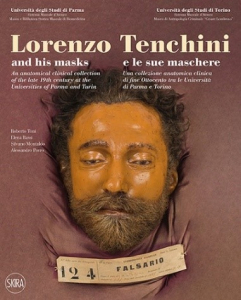 This bilingual (English and Italian) volume, authored by Roberto Toni, Elena Bassi, Silvano Montaldo and Alessandro Porro and realised thanks to two research grants from the Ministry of Education, University and Research – MIUR ACPR12_00312 and PANN15T3_00816, and a fund from the University of Parma, constitutes the first complete catalogue of the masks in the Tenchini collection, a collection of artefacts that is completely unique in the western world, developed using mixed ceroplastic-anatomochirurgical transplant technology and for which there are still no procedural certainties, but some mysteries remain the subject of current scientific and historical investigation.
This bilingual (English and Italian) volume, authored by Roberto Toni, Elena Bassi, Silvano Montaldo and Alessandro Porro and realised thanks to two research grants from the Ministry of Education, University and Research – MIUR ACPR12_00312 and PANN15T3_00816, and a fund from the University of Parma, constitutes the first complete catalogue of the masks in the Tenchini collection, a collection of artefacts that is completely unique in the western world, developed using mixed ceroplastic-anatomochirurgical transplant technology and for which there are still no procedural certainties, but some mysteries remain the subject of current scientific and historical investigation.
The work is the result of collaboration between the University of Parma (University Museum System, Museum and Historical Museum Library of Biomedicine) and the University of Turin (University Museum System, Museum of Criminal Anthropology ‘Cesare Lombroso’), and is enriched by historical, scientific and artistic essays by Italian and foreign academics, accompanied by a rich iconographic repertoire.



